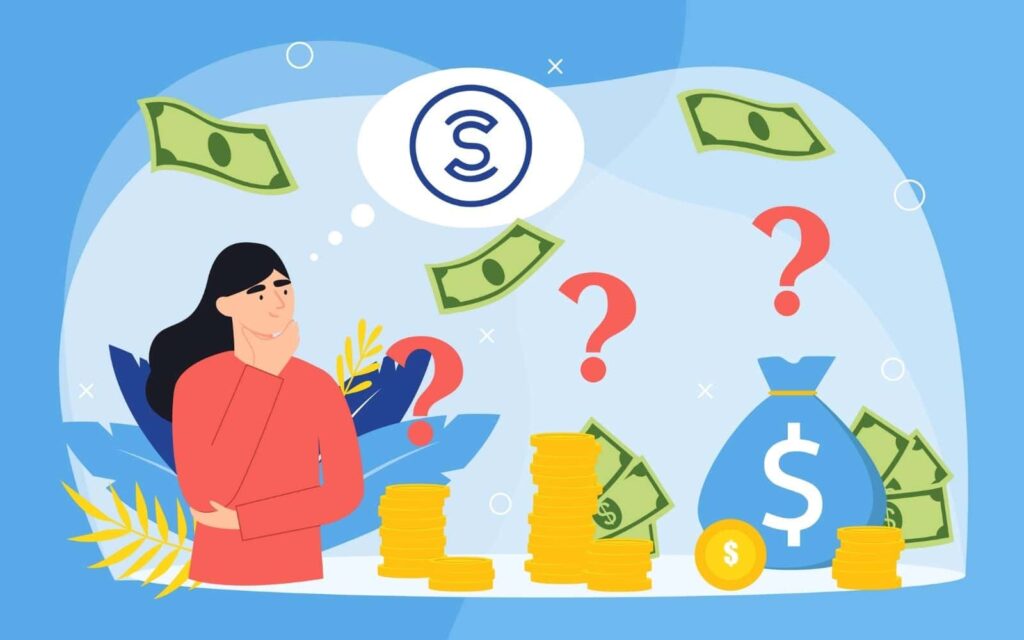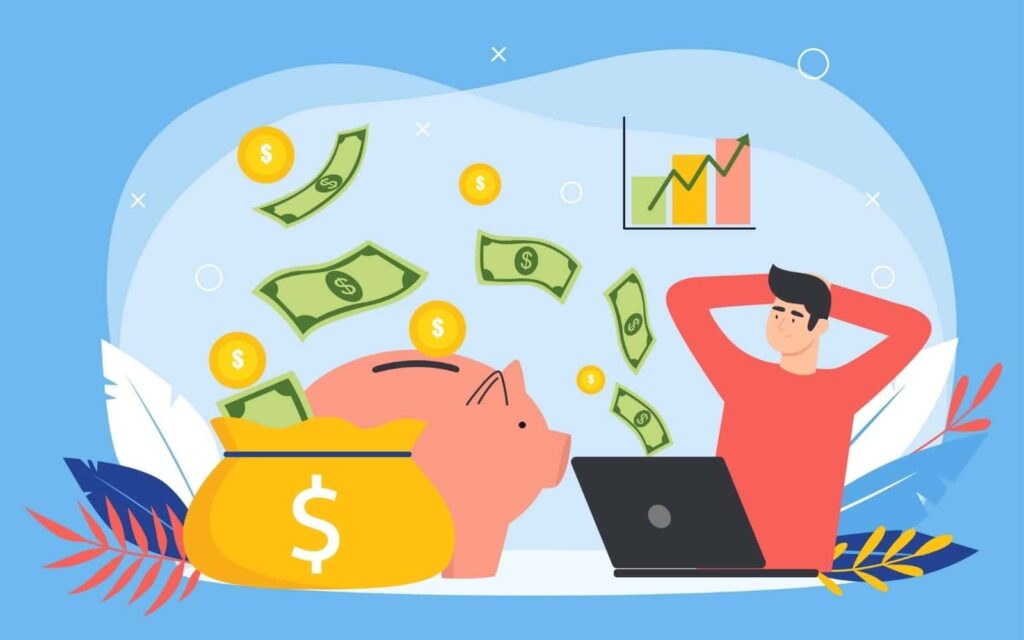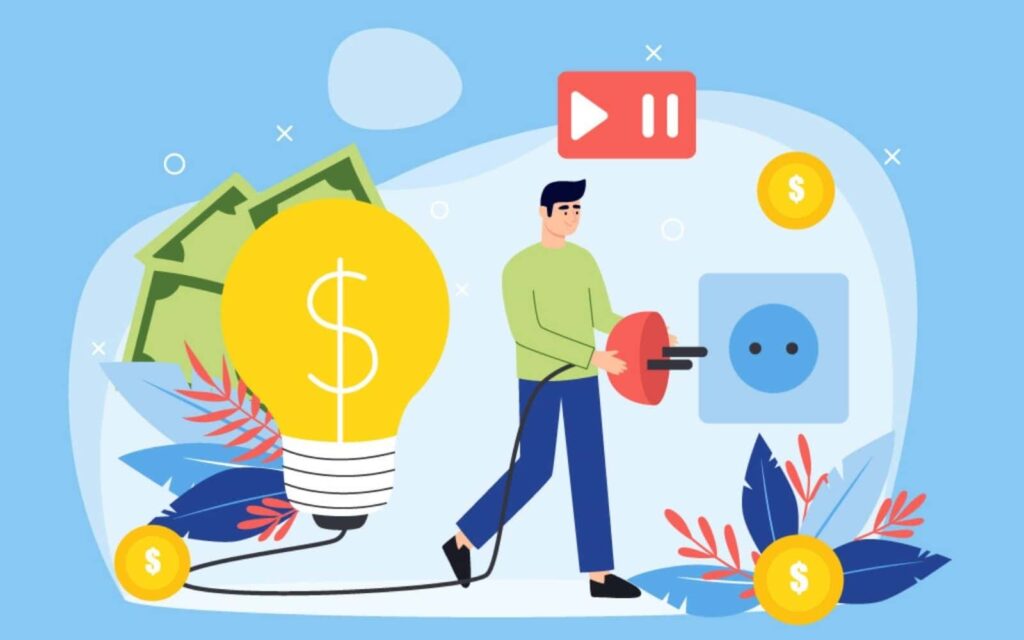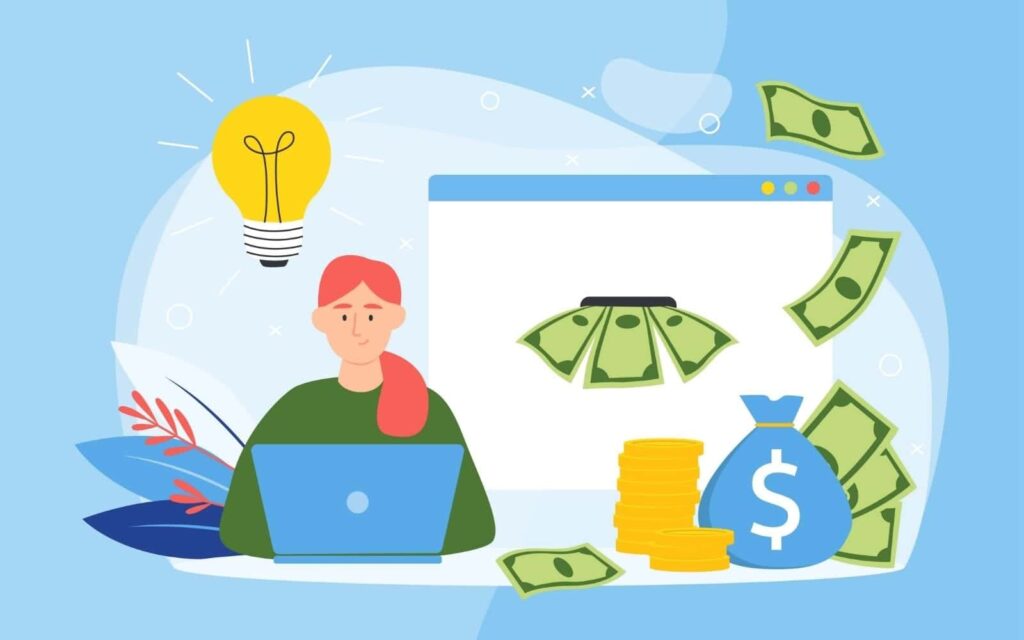Disclosure: This post may contain affiliate links. If you click on a link I may make a small commission at no extra cost to you. You can read the full disclosure here.
Last Updated on February 19, 2023 by Chris Panteli
Ultimate Guide To Flea Market Flipping
So you want to get involved with flea market flipping and start making some money?
Well, your new side hustle could be just around the corner if you know the steps you need to take to get started the right way.
If you think you’ve got a good eye for a bargain and enjoy haggling then flea market flipping could be for you. This is a great time to learn the skills needed to start a profitable business, work for yourself, and make extra cash for yourself and your family.
This article explores the subject of flipping items for profit in detail and will set you up for a possible future in the business.
- Ultimate Guide To Flea Market Flipping
- What Is A Flea Market?
- What Is Flipping?
- Why A Flea Market?
- ‘Flippin’ Research
- Know The Market
- Negotiation
- 7 Tips For Flea Market Bargain Hunters
- Add Value
- Most Profitable Items To Sell At A Flea Market
- Where To Sell Your Flips
- How Much Can You Earn?
- Environmental Factors Of Flipping
- Flipper University
- FAQs
- Ultimate Guide To Flea Market Flipping
Do you love to learn from people who have already crushed it?
Well, Rob and Melissa from FleamarketFlipper.com made $79,000 in sales last year – simply by flipping flea market items. Their philosophy is unlike most other flippers, they like to find high-profit items and low volume, which for them is more manageable and means they only work 10-15 hours a week.
And the best thing is they can teach you the skills you need to start your own reselling side hustle on their Flipper University course.
If you want to know more, Rob and Melissa have put together a FREE 75-minute workshop which you definitely check out!
What Is A Flea Market?
A traditional flea market is defined as a street market where sellers and buyers come together to facilitate the purchase of second-hand or used goods. The key distinction to make between a flea market and other forms of street vending is the flea market itself is what attracts buyers.
One theory for the etymology of the term ‘flea market’ is that it’s derived from the French “marché aux puces” which literally translates to “market of the fleas” – because the old clothes that were sold supposedly contained fleas.
Now, it’s important to remember that markets of this nature have existed for centuries – and the naming of them is of little importance. In the UK (where I’m from) we call them car boot sales and in Australia, they call them trash and treasure markets!
The key thing to focus on is the type of seller/buyer arrangement that is set up for transactions to occur.
- A place where second-hand or used items can be sold and bought.
- The ability to barter or haggle on price.
As long as you have these two key elements then you will have the ability to acquire items, add value and make a profit.
In fact, you don’t even necessarily need to purchase items from a flea market if your intention is to flip for profit.
But more on that later.
Recommended: 67+ Genius Things To Sell At School To Make Money
What Is Flipping?
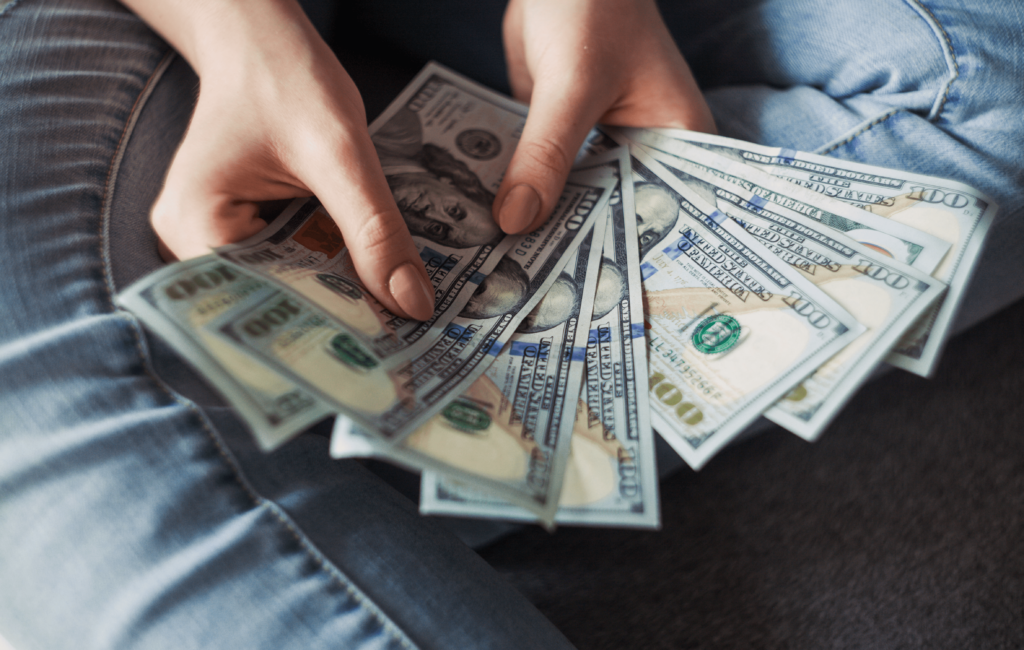
Flipping is simply defined as the process of buying an asset with the intent of selling it for a quick profit rather than holding it for long-term appreciation.
This is most commonly associated with real estate, whereby property is purchased with the expressed intention of selling quickly to make money. It is most commonly associated with the property industry as for most buyers, the appreciation of such a large asset is a key part of the buying decision.
Whereas for flippers, there is no regard for long-term appreciation or future value. The only part of the transaction which is of concern is the resale price that can be achieved in the short term time period.
Flipping can be associated with any type of transaction that displays these characteristics. And for the purpose of this guide, flea market flipping is the process of buying an asset that has a potentially higher resale price in the short term.
For example, buying a set of garden chairs for $50 that can be painted, spruced up, and sold quickly for $200.
This is a flip for a profit of $150.
Why A Flea Market?
So now we have explored the idea behind flipping, it may be prudent to understand the benefits of choosing a flea market as a basis behind this money-making hustle.
Flipping in its purest form is simply the process of purchasing something that can be sold for a profit. This might be because of two possible reasons:
- The item purchased has been undervalued when sold.
- The item purchased has value-added to it – and sold for a higher price.
This really is the key concept of any successful business – buy low, and sell high. And combing the two principles allows for maximum profit. It is exactly what I have done with my bricks-and-mortar food business for over a decade.
I buy good quality ingredients in large quantities – which means I am paying a better wholesale price. I then combine these ingredients and skillfully turn them into a product (adding value) that my customers love – and consequently pay a higher price to receive. Simple!
So, ultimately the reason the flea market is such a valuable location to engage in the business of flipping is that it provides optimum conditions to apply these basic principles.
- Items are often undervalued or can be negotiated down to lower than market value.
- Items are used or second hand and have great potential to add value.
Any Second-Hand Market
So to be a great flipper it is well worth considering the flea market, or any form of second-hand/used marketplace (garage sales/thrift stores) that allows for price negotiation as a place to start flipping items for profit!
As a quick side note, it is obviously more than possible to successfully engage in this type of activity outside of a flea market. For example, buying and selling on eBay is a great side gig and I recommend it as one of my best side hustles.
The only problem with eBay is the fact that the marketplace is so huge and often the items tend to be very accurately priced. Supply and demand economic principles work well and cause prices to be very competitive. This can leave less room for profit in comparison to what can be found at flea markets.
‘Flippin’ Research
The principles of the flea market flip are sound. You need to buy low and sell high. But before you can do that successfully you must know that you’re getting a low price in the first place.
This is where your research will be your secret weapon!
You need to know the market and the prices of items you are interested in flipping. This sounds a lot harder than it actually is, and the more you get involved in the research, the easier it will become.
I remember when I purchased my first house.
I must have spent at least 4 hours a day looking for properties online within my price range. After a few weeks, I knew every detail of every property for sale in my local area. And more importantly, I knew what seemed like a good deal, and what was far too expensive! If you have ever become submerged in the search for property, then you will know what I mean.
It’s like a crash course in real estate – you become an expert!
And that’s what you need to do for items you want to flip. Get online and start researching prices and conditions. You can use google, eBay, Amazon and even Facebook to start building a picture of price points and potential profit margins.
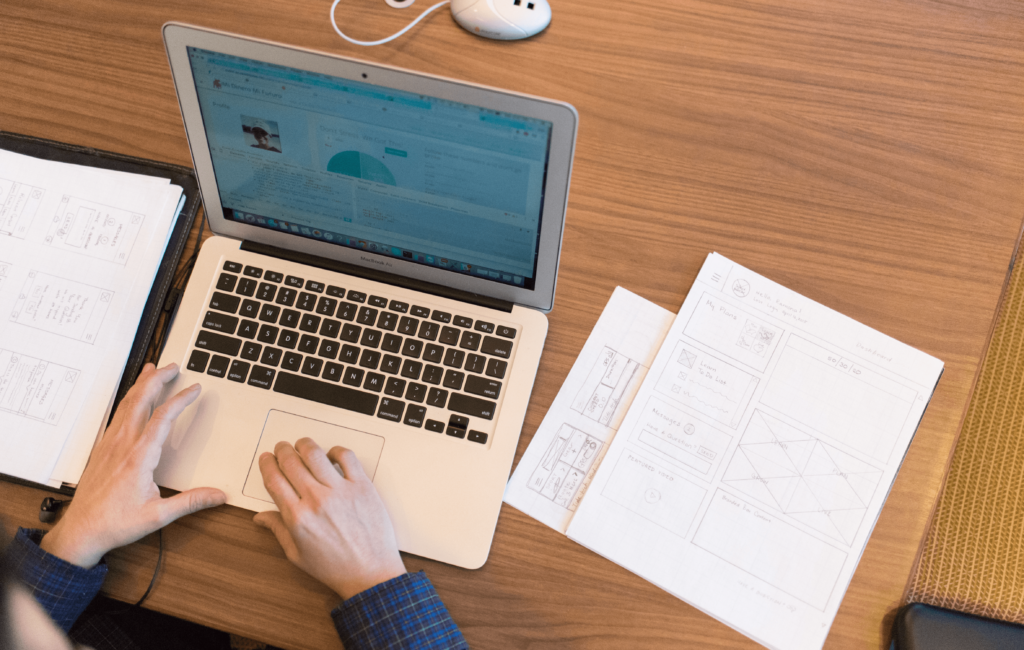
Know The Market
Getting a feel for the market and the potential profit you can make from certain items is the key ingredient for the successful flea market flip!
After doing your research you should have a good understanding of the best things to buy and resell for profit. I work in the food industry and that means I already have a pretty good feel about the prices of commercial equipment.
I know a commercial 1850w microwave (secondhand and working) will usually go for about $400. So when I saw one of my local competitors selling one for $200, I knew there was a potential flip. And guess what, there was! I made an easy $200 just because I knew the market!
Negotiation
So far we have discussed the basic principles behind what makes a profitable flip. Essentially, the whole premise of flipping for profit rests with the price you pay for your chosen item. As long as you have done your market research and know the achievable resale price – the profit margin ultimately depends on the total outlay.
And the flea market is the ideal location to get the best possible price you can and flip your money fast! This is because at the flea market you have the opportunity to verbally negotiate the price and haggle – the flipper’s ultimate weapon!
So you need to get really good at hustling for lower prices and dominating the flea market scene. Here are some handy tips when it comes to price haggling. I even do some of these when I’m negotiating prices with my food suppliers…and they work!
How to Haggle at the Flea Market

- Make a decision on the maximum price you are prepared to pay before entering into negotiations.
- Check around the flea market for similar items. You want to get a feel for what the going rates are on the day at that particular location.
- When you first approach the vendor to enquire about the price, do not act overly keen. Even if you think the price is already good, there is always room to haggle it down further.
- Name your lowest price – and make this considerably lower than what your actual lowest price is. This gives you the opportunity to raise your price and appear to be caving. The vendor may see this apparent weakness and be more willing to accept your price. Whereas you have actually got what you wanted!
- Be prepared to walk away if you can not get the price you want – remember you should already know how much profit you can make – and the more you pay, the less you make.
- If the vendor is playing hardball, as a last ditched attempt to seal the deal, physically hold out the total cash you are prepared to pay. Verbalise this final offer and say ‘look, there’s the money, take it or leave it’. (This has worked for me countless times – people hate to turn their backs on cold hard cash).
7 Tips For Flea Market Bargain Hunters
- Be in a good mood
- Make sure you have eaten a good breakfast and take snacks and drinks for when you’re walking around. You need to be on top of your game, and if you’re the sort of person that gets agitated when you’re hungry, you won’t be making the best decisions.
- Arrive early
- Often you will get the best deals at the end of the day when vendors are lowering their guards and accepting lower offers. But you need to get there early to see what is on offer and where the best finds are. Also, you do not want to miss out on a great piece if you’re too late to the party.
- Take a friend
- Have you ever seen those poker films when 2 people are in on the same game and helping each other out? Having a friend means you can get them to pretend to pull you back from a deal that you secretly want – persuading the vendor that they might miss out on a sale.
- Haggle
- This is your secret weapon and I’ve outlined some tips on haggling already. But you must remember to do this before making any purchasing decision. Even if the advertised price already seems good. Do not let your emotions get in the way and beat down your profit.
- Take notes
- If the items you are seeking out have some important elements to check for make sure to have that information on you. You don’t want to buy something only to later realise it wasn’t exactly what you wanted. Attention to detail is part of the hustle!
- Ask questions
- You may need some additional information about an item and should not be afraid to ask. Be aware that the vendor may not be completely truthful with you, but if you ask expert questions and do not receive satisfactory answers this could be a sign to walk away.
- Know when to walk away
- You’ve been at the flea market all day and had no luck. Just because it’s getting towards closing time doesn’t mean you should force a sale that’s not completely right for you. If you are not totally satisfied with the price and quality – walk away. There is always next time.
Add Value
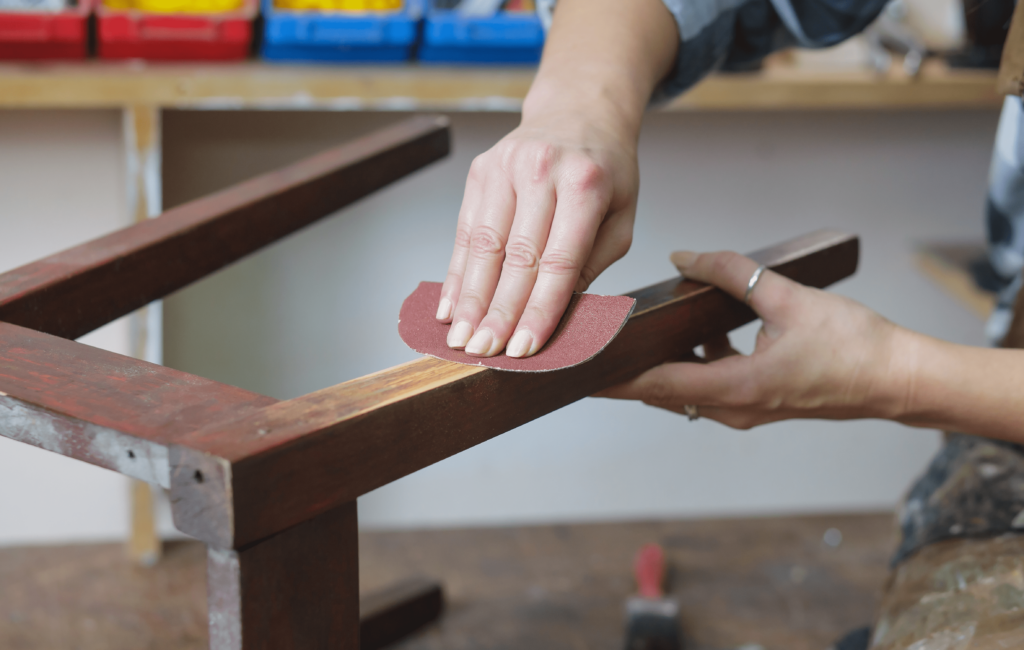
So, now let’s look at how to really make money at the flea market – and flip those items for a massive profit.
You should have already purchased your items for a price that leaves room for a healthy profit when you sell them. But if you really want to up your game and make serious cash, you’re going to want to add value.
This again is a basic principle of business – and it happens all around us every day. Nike, for example, purchases the materials they need at a fraction of the cost they sell a pair of Air Force 1′ for (my favorite trainers by the way).
They do however assemble the materials together and add value, which in turn they are able to sell for a substantial profit. And although this is a case in point for a new product, the same logic can be applied for flea market second-hand items.
If you can add value to the items you want to flip then you will be able to significantly increase your profit margins.
Take for example the commercial microwave I was able to flip. I was unable to add any value as I’m in no way electronically inclined – and the microwave was in working order.
But I do know someone who makes a living purchasing faulty commercial microwaves (at a logical price), fixes them up to a good working standard, and then flips them. He adds value and as such makes lots of money doing so.
And there are loads of things you could do this for:
- Furniture – this can be refurbished, cleaned and restored.
- Items with Motors – anything mechanical can be repaired, restored and fixed.
- Appliances – can be fixed and repaired.
- Clothes – can be repaired and refashioned into new pieces.
This list is by no means exhaustive but gives you an insight into the possibilities. Literally, anything that can be made better than the condition in which it was purchased qualifies. And it’s this simple process that will see your profits skyrocket with the flea market flip!
Most Profitable Items To Sell At A Flea Market
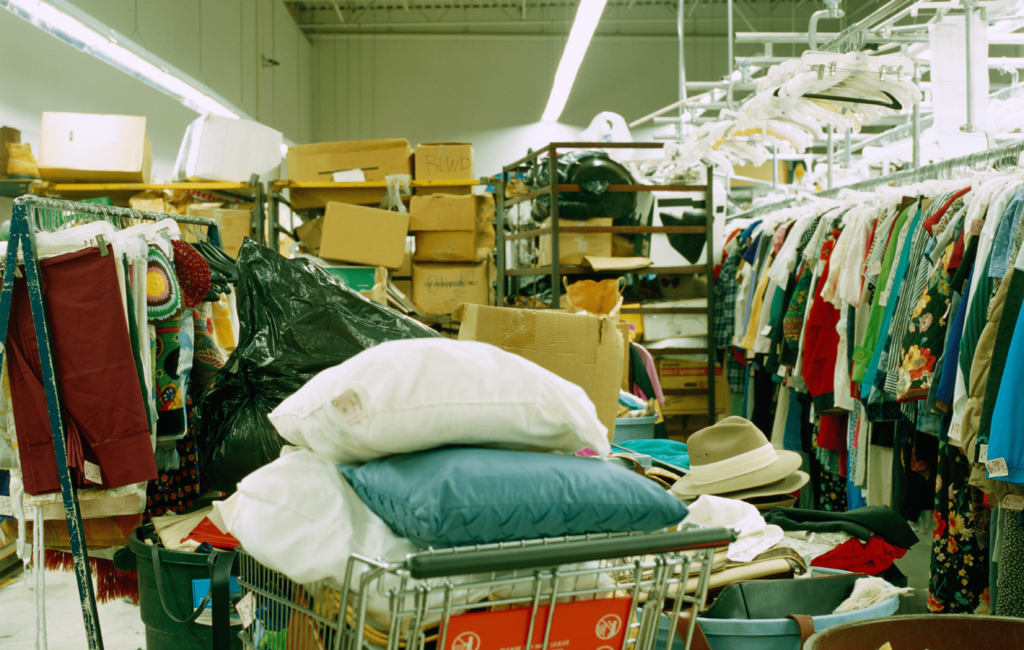
Firstly, there are two important things to consider when choosing the best items to flip for profit.
How Much Value Can You Add?
As we have already discussed, adding value is by far the best way to massively increase your profit. Therefore picking items with which you have some expertise or skills to fix, repair, adjust or enhance would be ideal. You need to take into account the amount of time you give to this task, as time is money!
If, for example, you are a dab hand at woodwork, and can fix up a dining room table to a high standard. The amount of time this takes needs to be factored into your profit margins. It’s no good being able to sell the table for $200 more than you paid for if the restoration takes you 30 hours.
If however, you can complete the task in 2 hours, the $200 worth of added value is worth $100 per hour for your labor. Not bad, hey!
High Price vs Low Price Items
The second consideration which you need to carefully consider is the price bracket in which your chosen items fall. There are pros and cons for both:
- High Priced Items Pros
- Can sell in much lower volume and make more money.
- Takes less time to sell fewer items.
- Easier to add more value.
- High Priced Items Cons
- Larger initial outlay which can be difficult if you’re short on cash.
- A larger amount of capital tied up in stock if items don’t sell.
- Can be harder to sell.
- Tend to be larger items (higher shipping costs if selling online).
- Low Priced Items Pros
- Can be much easier to sell.
- Fast turn around time so less money tied up in stock.
- A lower initial outlay on items so more affordable to get started.
- Tend to be smaller items (lower shipping costs if selling online).
- Low Priced Items Cons
- Need to sell in much higher volume to make enough money.
- Can be more competitive as more people selling similar items.
- More difficult to add value.
Best Items to Flip Ideas
- Indoor furniture
- Outdoor furniture
- Antiques
- Collectables
- Games
- Toys
- Home appliances
- Commercial appliances
- Record players
- Vinyl records
- Vintage electronics
- Clothes
- Women’s shoes
- Bicycles
- Strollers
- Yard equipment
- Power tools
- Video games
- Video consoles
- Sports memorabilia
Where To Sell Your Flips
Now you have completed these important tasks:
- Researched your items to discover resale potential.
- Found the items at a price which leaves room for profit.
- Haggled with the vendor to receive an even better price.
- Where appropriate, added value to further increase profitability.
You are now ready to flip your items and start seeing the money come rolling in.
So where are the best places to flip for money?
Well, it may seem counter-intuitive, but one of the best places to flip for profit is right back where you started; at the flea market.
This is because you have a captive audience that will be looking for quality items that offer value. If you have done your job correctly and accurately priced your item then you shouldn’t have trouble selling it.
It is worth considering trying a different flea market to the one you purchased from or at least waiting a couple of weeks if using the same one. Most flea markets have a huge percentage of repeat customers – and a small waiting period will be beneficial to you.
eBay is a fantastic option to reach a much larger market and potentially achieve a higher selling price. If your item is more niche, having access to more buyers will increase its chances of selling. But you will have to take into account shipping costs.
Etsy is another fantastic option and has more of an arts and crafts audience. This is well worth considering for antiques, vintage, hand-made, repaired and restored pieces. Also, the things sell for a fixed price which can be a more manageable solution for some.
Holding your own yard sale and advertising on Craigslist or Facebook Marketplace are also great options. It is worth testing out multiple sales avenues, as some places may work better than others depending on what it is you’re selling.
How Much Can You Earn?
Flea market flipping has the potential to earn you a lot of money that could easily become a full-time wage or a part-time awesome side hustle to supplement your income.
In 2015 Rob and Melissa from FleamarketFlipper.com made $42,000, and the following year they earned over $133,000. The earnings potential is very much like any other business. The more work you put into sourcing well-researched items, the better you can do.
Here are just a few examples of some of the amazing items Rob and Melissa have flea market flipped recently, with incredible results:
Tap twice to load then open Video...
Tap twice to load then open Video...
Tap twice to load then open Video...
Environmental Factors Of Flipping
There are so many possibilities to increase your earnings, make more money, and progress towards a better financial future. Here at LifeUpswing, we talk a lot about making money online, side hustles and passive income.
I think it is worth noting that embarking upon a future in flea market flipping also has some possible unforeseen benefits.
The sheer fact that you are buying something that has already been made and then selling it for profit has huge environmental advantages.
The process of repurposing and upcycling reduces the amount of waste being sent to landfills. It also reduces the need for production using new or raw materials. This means a reduction in air pollution, water pollution, greenhouse gas emissions and will preserve the status quo of global resources.
So if you’re going to flip, know that you are also doing your bit!
Recommended: 11+ Incredible Cheapest Ways To Live
Flipper University
Flea Market Flipper Course
We took our flipping side hustle from $42K part-time to $133K full-time and never looked back.
✅ 45+ lessons in 13 modules
✅ PDF downloads
✅ Excel spreadsheets
✅ Video tutorials
✅ Financial freedom

FAQs
What are the easiest things to flip?
If you want to be a great flea market flipper then having easier items to flip puts you in a good position for success. The easiest items to sell will always be ones that are in demand and can be offered for a price that satisfies both parties.
Furniture, jewelry, toys, baby-related products, clothes, consumer electronics, tools, garden products, and commercial products are always great items to flip for profit.
What is the most profitable thing to sell?
This will always depend on the demand and the way you perceive profit. If you purchase an item for $1 and sell it for $2 then you have made a 100% profit – but in real terms, that’s just $1. Whereas you could spend $100 and sell for $150 – that’s less of a profit margin (50%) but in real terms, you have made a $50 profit. The most profitable items will always be ones that you get for a low price and add considerable value too.
How can I flip money fast?
If you want to flip your money fast at the flea market it’s going to be easier with low-priced items – selling online.
How do I start flipping?
If you want to be a flea market flipper then you will need some initial investment capital (to buy your items and possible refurbishment materials) and an online presence to sell. If you want to resell back at the flea market you will need to pay for your spot and fuel to get there. You will also need to have done your research and know the market.
Recommended: How to Make Money Flipping Cars | Ultimate Guide

